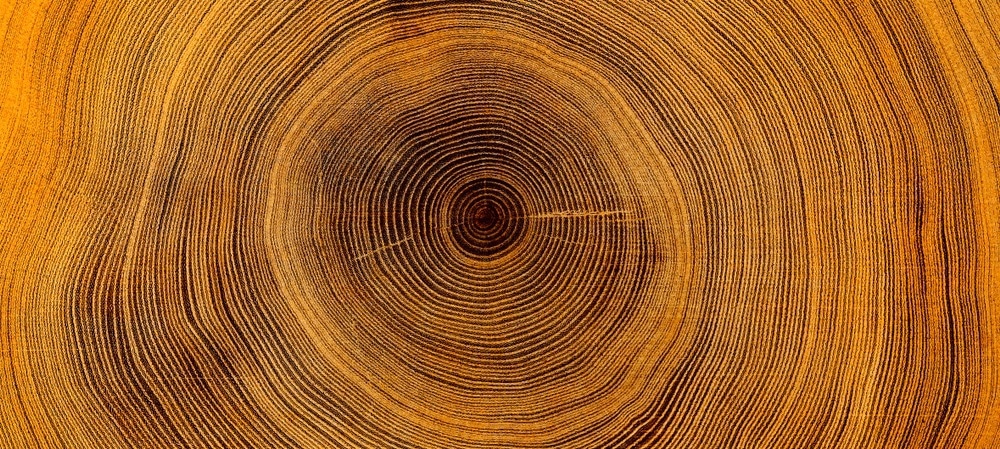Halloysite nanotube (HNT) is a naturally occurring clay nanotube used in advanced materials due to its unique hollow tubular structure, biodegradability, and mechanical and surface properties. However, the alignment of these clay nanotubes is challenging due to the lack of straightforward techniques.

Study: “Tree-Ring” Patterns of Halloysite Nanotubes by Agitation-Assisted Assembly for Guiding Cell Alignment. Image Credit: captureandcompose/Shutterstock.com
In this regard, an article published in the journal ACS Applied Nanomaterials presented an efficient strategy to fabricate an ordered architecture of HNTs. The clay nanotubes were aligned on a glass substrate via a magnetic rotor-assisted drying of their aqueous dispersion.
The agitation of the aqueous dispersion of HNT during water evaporation induced shear forces on the clay nanotubes, aligning them in the form of tree-ring. Various factors that influenced the formation of HNT patterns were investigated, including HNT concentrations, nanotube charges, drying temperature, rotor size, and droplet volume.
Besides the physical factors, the HNT tree-ring pattern's micromorphology and the birefringent phenomenon were studied utilizing scanning electron microscopy (SEM) and polarized optical microscopy (POM).
The results revealed that the perfect alignment of the clay nanotubes was realized when the concentration of HNT was over five weight%, and a higher concentration of HNT increased the surface roughness and thickness of the HNT pattern.
Furthermore, the HNT pattern promoted the attachment and multiplication of mouse fibroblast (L929) cells, whose growth was observed along the direction of alignment of clay nanotubes as per the contact guidance mechanism. Thus, the present facile and rapid method of HNT alignment on the solid substrate has the potential for cellular-responsive template development.
Halloysite Nanotubes
One-dimensional (1D) nanoparticles, like nanowires, nanotubes, nanofibers, nanorods, and nanobelts, have been widely used in biosensors, composites, energy storage, biosciences, and clinical diagnosis, owing to their outstanding mechanical, electronic, optical, thermal, biological, and magnetic properties.
Halloysite nanotubes (HNTs) are natural clay nanotubes with external diameters of 50–70 nanometers, internal lumen of 10–15 nanometers, and Al2Si2O5(OH)4·nH2O formula. One of the unique features of these nanotubes is different inside/outside chemistry (alumina, Al2O3/silica, SiO2), allowing for their selective modification.
Due to biocompatibility and very low toxicity, these clay nanotubes are used for biomedical applications, cosmetics, and animal care due to the superior nanosafety of clay nanotubes on different cell cultures. These clay nanotubes have advantages, such as low cost, wide availability, and easy modification based on silane chemistry.
Contact guidance refers to a phenomenon that influences the orientation of cells based on geometrical patterns such as nano/microgrooves on substrates. With the development of tissue engineering, the contact guidance phenomenon has been extensively applied to influence the morphology and organization of cells. Nevertheless, the biological processes underlying contact guidance are still unclear.
Formation of HNT Tree-Ring Pattern
The present work demonstrated a straightforward process for the HNT tree-ring pattern formation. In this process, after loading a droplet of HNT dispersion on a round glass slide, the HNT droplet was squeezed between the two surfaces (glass slide and magnetic rotor) in contact, turning it into a dispersion, held by capillary action and facilitating greater solvent evaporation at the capillary edge.
Here, a shear force generated by the revolving magnetic rotor forced HNTs at the capillary edge to deposit onto the glass slide surface in regular orientation. As the water evaporated, the contact force outweighed the pinning force, pushing the contact line to move toward the center. Thus, the HNT tree-ring pattern was fabricated following the complete evaporation of water under the synergistic effects of the shear and capillary forces.
Furthermore, the POM results revealed an evident birefringent phenomenon of the HNT anisotropic architecture, and the SEM images attributed it to the parallel alignment of clay nanotubes.
Additionally, the L929 cells cultured on the tree-ring patterned clay nanotubes with different concentrations of HNT were evaluated based on the contact guidance mechanism. While L929 cells showed a random distribution on tree-ring patterned clay nanotubes with 0.5 weight % of HNT. The clay nanotube architectures with HNT concentrations of 5 and 10 weight % showed elongated cells along the orientation of clay nanotubes.
Conclusion
To summarize, macroscale HNT tree-ring designs were fabricated with an ordered alignment of nanoparticles using a cost-effective and innovative technique. The development of the aligned architecture of clay nanotubes was significantly influenced by the HNT concentration, temperature, surface charge, rotor size, and droplet volume. The concentration of HNT between 5 and 10 weight % resulted in highly ordered arrays of clay nanotubes, while at five weight percent, these arrays displayed a birefringent effect with vibrant colors.
The alignment of the clay nanotubes along the direction of shear force was confirmed using SEM images. With increasing HNT concentration, the thickness and surface roughness of the HNT coating increased. Thus, the present work offers a straightforward method for constructing nanoparticle architectures over large areas.
Reference
Chen, Y., Wu, F., He, Y., Feng, Y., Liu, M. (2022). “Tree-Ring” Patterns of Halloysite Nanotubes by Agitation-Assisted Assembly for Guiding Cell Alignment. ACS Applied Nano Materials. https://pubs.acs.org/doi/full/10.1021/acsanm.2c03255
Disclaimer: The views expressed here are those of the author expressed in their private capacity and do not necessarily represent the views of AZoM.com Limited T/A AZoNetwork the owner and operator of this website. This disclaimer forms part of the Terms and conditions of use of this website.